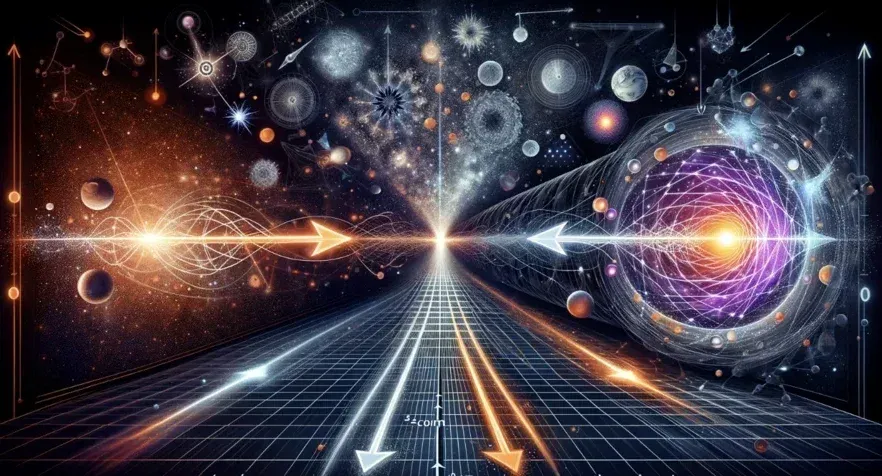The Milky Way’s Surprising Isolation
The universe, vast and mysterious, has always captivated human imagination. As we delve deeper into the cosmos, we uncover astonishing secrets that challenge our understanding of the universe’s structure and evolution. One such revelation is the possibility that our own galaxy, the Milky Way, resides within a colossal, nearly empty region of space, a 2 billion light-year wide cosmic void.
The KBC Void: A Gigantic Cosmic Underdensity
This immense void, known as the KBC void, was first proposed in 2013 by astronomers Istvan Szapudi, István Csabai, and András Kovács. It’s named after its discoverers, Keenan, Barger, and Cowie. This underdense region of space is so vast that it could accommodate tens of thousands of galaxies like our own. Despite its immense size, the KBC void is relatively devoid of galaxies and other celestial objects.
A Challenge to the Cosmological Principle
The existence of such a massive void challenges a fundamental principle of cosmology: the cosmological principle. This principle states that the universe is homogeneous and isotropic on large scales, meaning it looks the same in all directions. However, the KBC void seems to defy this principle, as it is significantly less dense than the surrounding regions of space.
Evidence for the KBC Void
While the KBC void is a relatively new discovery, growing evidence supports its existence. Astronomers have analyzed large-scale galaxy surveys, such as the Sloan Digital Sky Survey (SDSS) and the 2MASS Redshift Survey (2MRS), to map the distribution of galaxies in the universe. These surveys have revealed a significant underdensity in the region of space where the Milky Way resides.
Furthermore, studies of the cosmic microwave background (CMB), the afterglow of the Big Bang, have also provided clues about the existence of the KBC void. The CMB is not perfectly uniform; it exhibits slight temperature fluctuations that can be linked to the distribution of matter in the early universe. Some researchers believe that the observed temperature anomalies in the CMB could be a signature of the KBC void.
Implications for Our Cosmic Perspective
If the KBC void is indeed real, it has profound implications for our understanding of the universe. It could suggest that the universe is more clumpy and inhomogeneous than previously thought. It could also challenge our models of cosmic evolution, as the formation of such a large void would require specific conditions in the early universe.
Moreover, the existence of the KBC void raises questions about our own cosmic address. Are we truly a typical galaxy in a typical region of the universe, or are we inhabitants of a cosmic backwater? If we reside in a relatively empty region of space, it could have implications for our search for extraterrestrial life.
Future Research
To further investigate the KBC void and its impact on our understanding of the universe, astronomers will need to conduct more detailed observations and simulations. Future galaxy surveys, such as the Dark Energy Survey and the Large Synoptic Survey Telescope, will provide more precise measurements of the distribution of galaxies in the universe. Additionally, advanced computer simulations can help us model the formation and evolution of large-scale cosmic structures, including voids.
A Cosmic Mystery
The discovery of the KBC void is a reminder of the universe’s immense complexity and the many mysteries that still await us. As we continue to explore the cosmos, we may uncover even more surprising and unexpected findings. The KBC void is a testament to the power of scientific inquiry and the enduring fascination with the universe.

